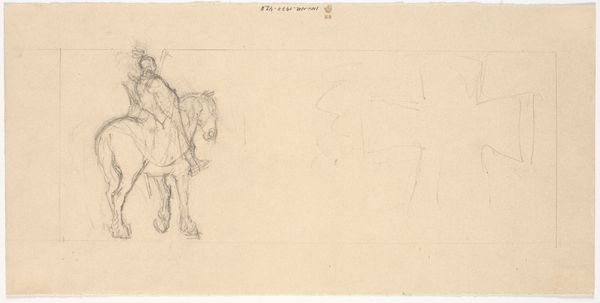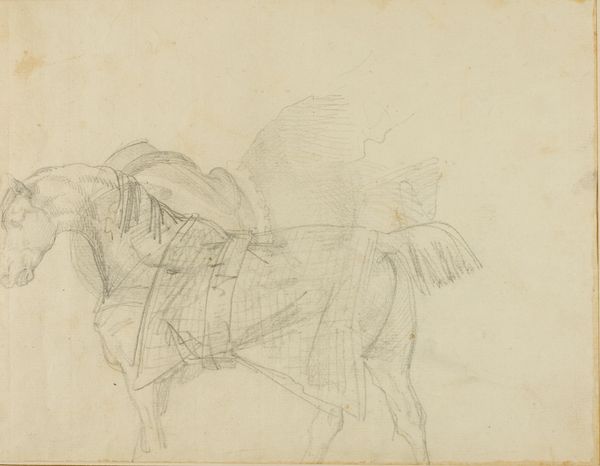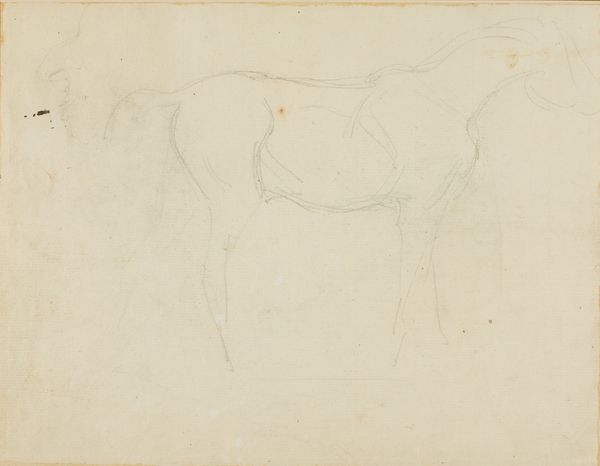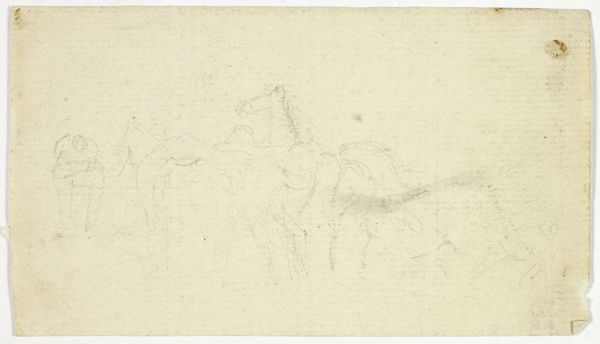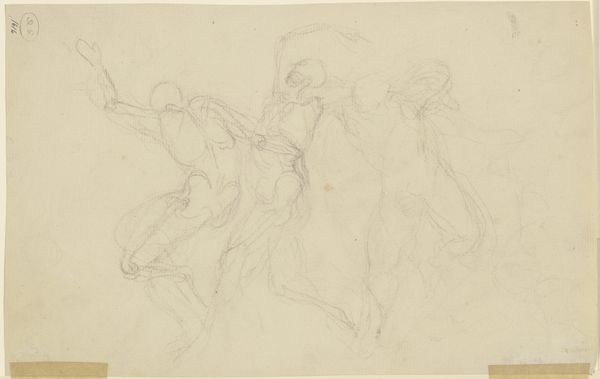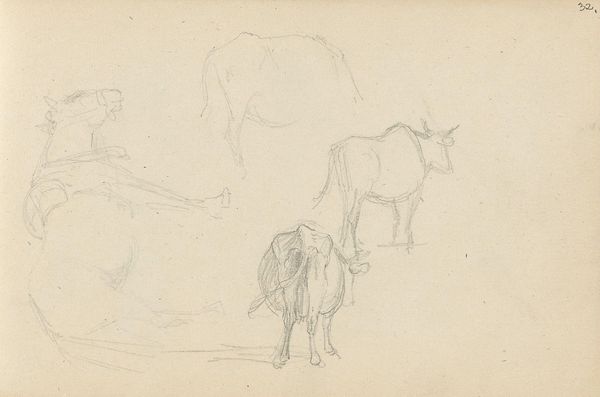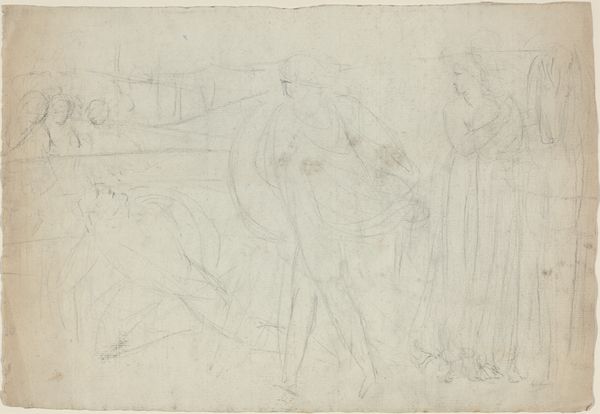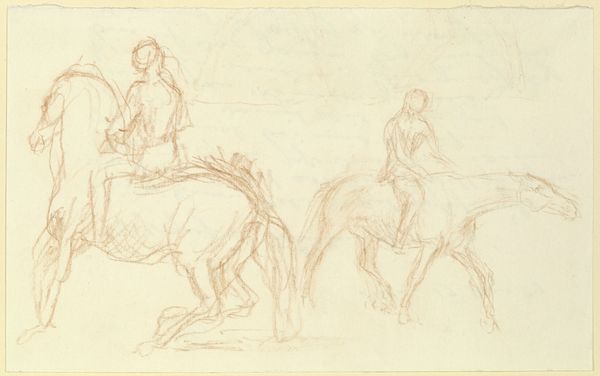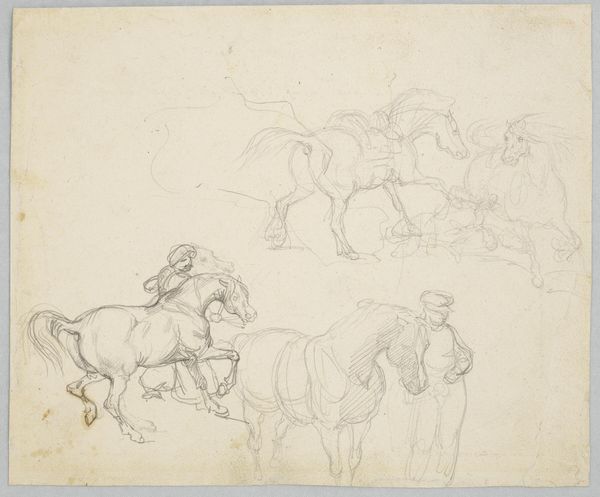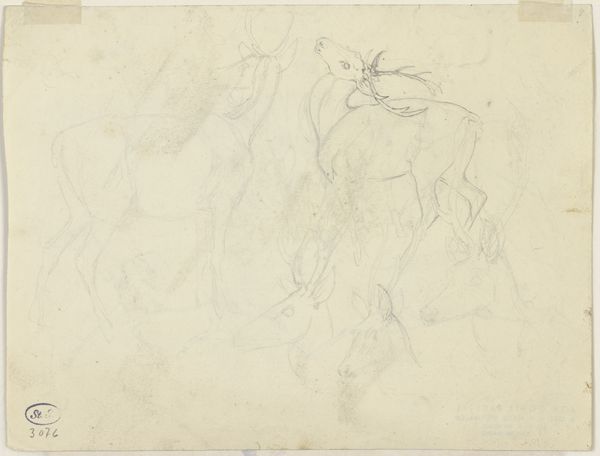
Study of a Horse Turning Its Head and Raising His Hind Leg 1818 - 1819
0:00
0:00
drawing, print, paper, graphite
#
portrait
#
drawing
# print
#
pencil sketch
#
paper
#
romanticism
#
graphite
Dimensions: 220 × 285 mm
Copyright: Public Domain
Curator: Théodore Géricault's "Study of a Horse Turning Its Head and Raising His Hind Leg" from around 1818, currently at the Art Institute of Chicago. It's a graphite drawing on paper. Editor: My first impression is of tentative energy. There's something quite restless and searching about the lines themselves, like the horse is struggling to define itself in space. Curator: That's interesting. For me, it evokes a sense of potent freedom, albeit constrained. Horses, throughout art history, represent raw power, but also domestication. This drawing is full of paradoxes, the animal is half wild. Editor: Right, there is domestication, which in that period translates also into economic and power dynamics. Consider how reliant agrarian and emerging industrial societies were on horses. How are these implied? Where does the art fit? Curator: We also need to see through the artist's biography. This work seems infused with his known personal conflicts and passionate exploration of Romantic ideals. You can see here, how, instead of a finished work, we have studies – they symbolize constant investigation, transformation. The multiple sketches seem to capture the same creature at different temporal stages, don’t you think? Editor: Yes, Géricault explores something fundamentally real through art here. Perhaps, it also touches on class anxieties... consider the artist's privileged background and how this afforded him the time and resources to even create this work. What comment do you think Géricault is making? Curator: I feel these anxieties. I believe he seeks the truth beneath mere observation. A constant state of evolving representation, I’d dare to say. Each sketch embodies this quest. Notice how, for the mane of the horse, and for its muscles, there is continuous redrawing. He is seeking the essence. Editor: And how that essence becomes intertwined with narratives of domination and control when viewed through a critical lens today. These studies reveal the multiple facets of the horse as not only animal or symbol, but also as a contested figure. Curator: Precisely. We are discussing how Romantic art may echo personal struggle and collective narratives that we should readapt, and, dare I say, reconsider, within different times and cultures. Editor: A horse is never just a horse, right? This sketch really drives that home. Curator: True! The symbolism can shift!
Comments
No comments
Be the first to comment and join the conversation on the ultimate creative platform.
